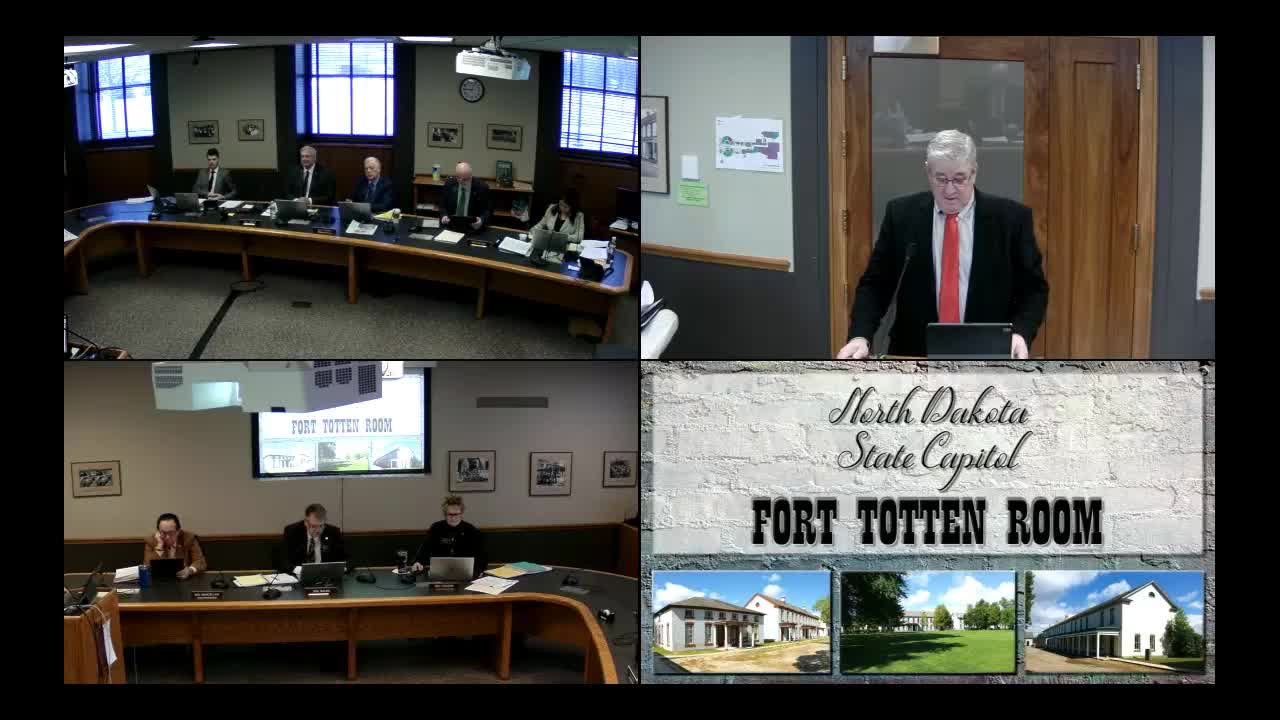North Dakota updates 911 fee distribution amid technology shifts and mobile device rise
February 18, 2025 | Finance and Taxation, Senate, Legislative, North Dakota
This article was created by AI summarizing key points discussed. AI makes mistakes, so for full details and context, please refer to the video of the full meeting. Please report any errors so we can fix them. Report an error »

In a recent meeting of the North Dakota Senate Finance and Taxation Committee, discussions centered around the evolution and funding of the state's 911 emergency response system. The meeting, held on February 18, 2025, highlighted the significant changes in technology and usage patterns since the introduction of 911 services in North Dakota.
Historically, 911 systems were first implemented in communities like Mandan in the early 1970s, with Bismarck following suit in the late 1980s. The system has evolved from a simple call-answering service to a sophisticated operation where dispatchers provide critical pre-arrival instructions for emergencies, including CPR and childbirth assistance. This evolution has necessitated ongoing funding and technological upgrades.
The committee discussed a proposed bill aimed at adjusting the tax structure that funds the 911 system. Originally, a tax was levied on landline phone bills to support the implementation of 911 services. As mobile phone usage surged, the tax was adapted to include wireless services, with the current fee structure allowing for a maximum charge of $2 per line. The bill proposes to reduce the administrative fee retained by phone companies from 5% to 2.5%, a change that aims to redirect more funds back into the 911 system.
Danelle Preski from the North Dakota Association of Counties expressed support for the bill, emphasizing the need for efficiency in collecting and distributing 911 fees. The association has streamlined the process, allowing for a single check to be sent to counties rather than multiple checks from various service providers. This change is expected to enhance the financial sustainability of 911 services across the state.
The committee also addressed concerns regarding the distribution of funds collected from the 911 fees. Approximately $18 million is generated annually from these fees, with a significant portion allocated to local dispatch centers. However, questions arose about the adequacy of these funds in covering operational costs, as many centers rely on additional county funding to maintain services.
As the meeting concluded, the committee acknowledged the importance of the 911 system and the need for ongoing adjustments to its funding structure. The proposed changes aim to ensure that the system remains responsive to the needs of North Dakota residents while adapting to the technological advancements that have transformed emergency response in the state. The committee will continue to review the bill and its implications for the future of 911 services in North Dakota.
Historically, 911 systems were first implemented in communities like Mandan in the early 1970s, with Bismarck following suit in the late 1980s. The system has evolved from a simple call-answering service to a sophisticated operation where dispatchers provide critical pre-arrival instructions for emergencies, including CPR and childbirth assistance. This evolution has necessitated ongoing funding and technological upgrades.
The committee discussed a proposed bill aimed at adjusting the tax structure that funds the 911 system. Originally, a tax was levied on landline phone bills to support the implementation of 911 services. As mobile phone usage surged, the tax was adapted to include wireless services, with the current fee structure allowing for a maximum charge of $2 per line. The bill proposes to reduce the administrative fee retained by phone companies from 5% to 2.5%, a change that aims to redirect more funds back into the 911 system.
Danelle Preski from the North Dakota Association of Counties expressed support for the bill, emphasizing the need for efficiency in collecting and distributing 911 fees. The association has streamlined the process, allowing for a single check to be sent to counties rather than multiple checks from various service providers. This change is expected to enhance the financial sustainability of 911 services across the state.
The committee also addressed concerns regarding the distribution of funds collected from the 911 fees. Approximately $18 million is generated annually from these fees, with a significant portion allocated to local dispatch centers. However, questions arose about the adequacy of these funds in covering operational costs, as many centers rely on additional county funding to maintain services.
As the meeting concluded, the committee acknowledged the importance of the 911 system and the need for ongoing adjustments to its funding structure. The proposed changes aim to ensure that the system remains responsive to the needs of North Dakota residents while adapting to the technological advancements that have transformed emergency response in the state. The committee will continue to review the bill and its implications for the future of 911 services in North Dakota.
View full meeting
This article is based on a recent meeting—watch the full video and explore the complete transcript for deeper insights into the discussion.
View full meeting
